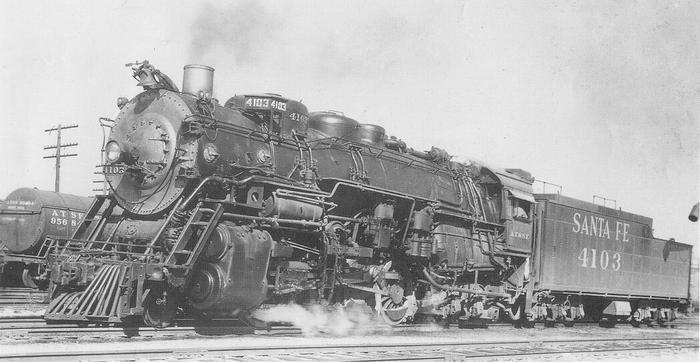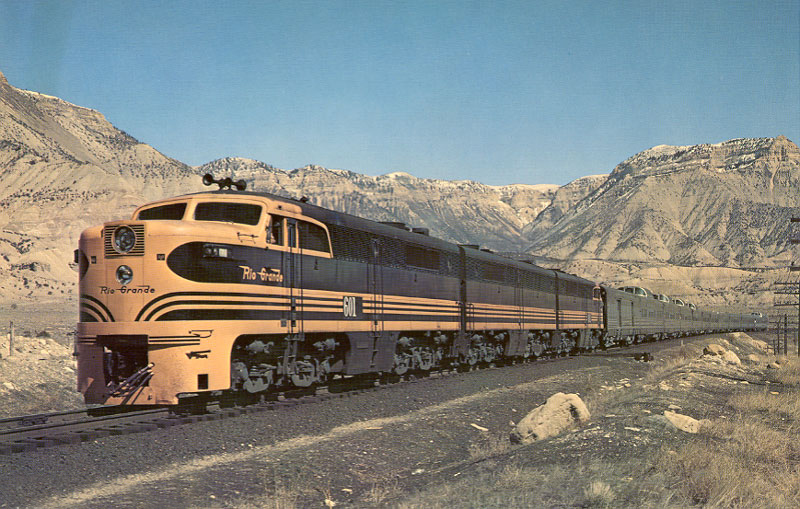
Like SP #3661, Santa Fe Berkshire #4103 survived by virtue of being the first engine to haul a Santa Fe freight through the Alameda Corridor in the LA Area. Today, it is likewise preserved at Long Beach alongside the 3661.

Rio Grande Northern #1702 is resting in Blood Yard at Las Vegas, NV. The yard was named after Utah govenor Henry H. Blood, who actively collaborated with the Rio Grande to extend the Marysvale line down to Cedar City and St. George.

A pair of D&RGW ALCO PAs lead the San Diego Zephyr near the Utah - Arizona state line on March 3, 1958. This train was created in 1953 to serve as a San Diego counterpart to the California Zephyr, with Southern Pacific handling the train from Las Vegas to San Diego.

A standard-gauge Consolidation runs light engine along the Chili Line shortly after the conversion to Standard Gauge was completed in August 1938. Upgrades after the war included a second track and the additional upgrading of the ATSF interchange at Santa Fe, NM.
A ML-4000 rests at the Rio Grande yard in Boise City, OK. The town was the midway point between Trinidad and Amarillo, TX. The line, much like the rebuild of the Chili Line, was constructed in the 1930s was a single-track line in collaboration with local WPA chapters. However, the C&S eventually saw its presence as a chance to get cargo heading west from Texas shuttled to its final destination more quickly.

Western Pacific #257 is shown here with a freight a Bieber, CA on a line that the WP acquired from the Great Northern in 1935.

WP Mikado #301 rests in the yard at Carson City, NV. It will soon take a freight south over new and ex-Tinopah & Tidewater tracks to the ATSF interchange at Barstow, CA.
Last edited: